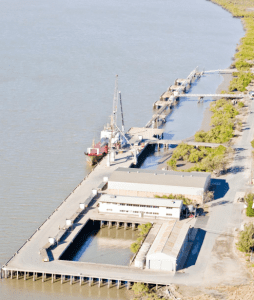The feasibility of shipping live export cattle from ports in Central Queensland is being formally investigated as supply and demand circumstances force exporters further south than usual in their search for suitable cattle.
Big export orders this year from South East Asia, and Vietnam in particular, have led to light slaughter weight cattle being sourced from as far south as Roma, Mitchell and the Burnett regions of Southern Queensland to fill export orders out of Townsville and even Darwin.
Consecutive drought years in North Queensland have caused a dramatic sell down and herd reduction in that region, while availability of slaughter weight cattle in the Northern Territory is also said to be now running low.
The lack of numbers in traditional northern export supply areas has pushed exporters further south into Central and Southern Queensland, where conditions are dry and deteriorating through winter, prices are depressed and producers wanting to offload cattle are facing 10 plus week delays to secure abattoir space.
Exporters are now examining whether it makes better economic sense to ship cattle in volumes of 3000-4000 or more north from Rockhampton or even Brisbane than it does to road freight them to Townsville.
(See Beef Central’s article from April discussing the possibility of more exports from southern ports this year here)
In recent weeks a committee has been formally established in Rockhampton involving representatives of the Queensland Government, AgForce, livestock agents and producers to investigate the feasibility of exporting cattle from Rockhampton’s Port Alma.
The committee is looking into questions such as what infrastructure is required and what is needed to satisfy Australia’s compulsory Exporter Supply Chain Assurance System (ESCAS) to enable exports from the port to commence.
One source connected to the committee who asked not to be identified told Beef Central that infrastructure costs were likely to be relatively minimal, with a set of holding yards and a loading ramp likely to be the biggest cost.
He said Port Alma already had the benefit of being within close to proximity to a number of large modern holding yards around Rockhampton which could serve as export registered premises, and also had adequate space on the apron for livestock trucks to unload and turnaround.
The Port also lacked the congestion and port access issues that continued to pose problems for livestock exporters in Darwin and to a lesser extent Townsville (See Beef Central’s recent article on port congestion issues in Darwin here).
The concept has triggered debate in the pages of the Rockhampton Morning Bulletin in recent weeks, with locally based meat processor Teys Australia and Member for Rockhampton Bill Byrne both warning of major impacts to the local economy and processing investment if the plan goes ahead (See Rockhampton Morning Bulletin article here)
One exporter told Beef Central that the Rockhampton port would not be a major export port and would only be used spasmodically depending on available orders.
“It is just another option for producers and it will only work if it is commercial,” the exporter said.
“The only reason people are looking at is because they haven’t got feed in the paddocks, cattle are deteriorating, and they can’t get a kill.
“It is about 10 weeks to get a kill at the moment, and there are cattle going up to Townsville from southern Queensland.
“At the and of the day it will only work if it is the best return available to producers, people need to put that into perspective.”
AgForce cattle council president Howard Smith said market forces would dictate whether exports from Port Alma would be viable or not.
“Our view is that it is a commercial world, and if people want to explore those opportunities good luck to them,” Mr Smith said.
“Anything that creates competition is a good thing.
“If there is more money getting paid in the processing sector, that is where the cattle will go; at the end of the day it will come back to who is paying the most money.”


It would be good to see the monopoly broken that meat processors have in the cq area and finally give a bit back to producers.